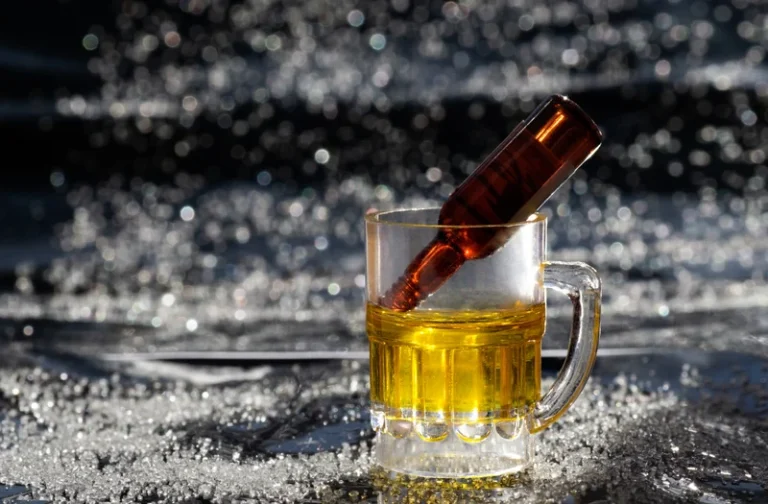Uncovering the Relationship Between Alcohol and Bruising

Being more mindful when drinking, using protective strategies, addressing nutritional deficiencies, and treating medical conditions can all help reduce bruising. Alcohol consumption without a good meal prior may result in headaches, dizziness, and nausea. To maintain a balanced lifestyle, it is advised to have a nutritious meal or snack before drinking alcohol to avoid any negative consequences.
Binge Drinking Increases Stroke Risk Too

What all of this means is that people who live with an alcohol use disorder are likely to consume large quantities of alcohol. They may have such a high tolerance that they do not show any overt signs of intoxication, despite drinking large amounts. Stopping alcohol abruptly after long-term heavy drinking can also lead to alcohol withdrawal syndrome, which commonly manifests as symptoms like nausea and vomiting. Only a couple of drinks can cause vasodilation of blood vessels close to the skin, leading to potential bruising if you bump your body against a hard surface. According to Scott Swartzwelder, Ph.D. (coauthor of Buzzed), consistent vasodilation caused by drinking alcohol leads to more blood flowing through your blood vessels. Certain other pain relievers are known to interact with venlafaxine, including nonsteroidal anti-inflammatory drugs (NSAIDs) and opioids.
Is Bruising After Drinking a Sign of Alcoholism?

One of the diagnostic criteria that points toward an alcohol use disorder is continuing to drink, even in the face of consequences. These consequences can include relationship problems, difficulty fulfilling duties at work or home, or a worsening of health problems. If a person continues to drink despite health-related problems, bruises after drinking may be a consequence that arises from alcohol misuse. An alcohol use disorder is a legitimate medical condition that causes lasting changes in the brain. Once a person develops an alcohol use disorder, alcohol and bruising they will continue to drink, even in the face of serious consequences, such as health problems caused by alcohol.
- Taking venlafaxine with St. John’s wort increases your risk of serotonin syndrome.
- Theories suggest that for certain people drinking has a different and stronger impact that can lead to alcohol use disorder.
- This can develop into alcohol hepatitis, which is the inflammation of the liver.
- Outside work, Trent values family time, personal growth, travel, and promoting a healthy lifestyle.
- If you already have unusual bruising, your liver could already be damaged, and that could mean that drinking at any level is not wise for you.
- When it comes to drinking, remember to always prioritize your well-being and make appropriate decisions.
Q8: Does alcohol affect the body’s ability to heal bruises?
However, the person often can’t recall the events that happened during an alcoholic blackout, which can include bumps, falls, and accidents that may have caused bruises. This condition occurs naturally in our bodies in response to various stimuli. However, excessive vasodilation caused by external factors, like drinking alcohol, can be problematic. Certain pain relievers, such as acetaminophen (Tylenol), don’t interact with venlafaxine. So it’s still best to check with your doctor or pharmacist before taking acetaminophen. Even though venlafaxine and NSAIDs interact, they’re sometimes taken together.
All form submissions are 100% confidential and your policy could cover the complete cost of treatment. You’ll soon start receiving the latest Mayo Clinic health information you requested in your inbox. Additionally, research has shown that alcohol may alter the composition of helpful microorganisms in your gut. These organisms play a crucial role in your gut and immune system function. I have been doing the sessions for the last few weeks and it has been a life changer experience. They will educate you on ABC Medication, breathing technique and nutrition.
Is Bruising A Sign Of Alcoholism?
Your judgment and decision-making skills will be affected fairly quickly when you start drinking. This is because it affects the prefrontal cortex, which is the part of the brain that controls reasoning and higher brain function. Since alcohol also lowers your inhibitions, you may be more likely to try something that you normally wouldn’t do, including potentially dangerous physical activities. This is also why people may be willing to get behind the wheel of a car while they’re drunk.

Withdrawal Symptoms

This aids in avoiding any harmful repercussions and guarantees a better living. Restrict your alcohol consumption to one or two drinks each day for the sake of your health. It is a good idea to restrict your alcohol use to live and maintain a healthy lifestyle.
Fuel groundbreaking medical research!
Additionally, chronic alcohol consumption can lead to deficiencies in certain vitamins and minerals, particularly vitamin K, which plays a crucial role in blood clotting. Deficiencies in vitamin K can exacerbate bruising and prolong the healing marijuana addiction process. Furthermore, alcohol can impair judgment and coordination, increasing the risk of falls and injuries that result in bruising. To counteract the sedating effects of alcohol, for example, the brain increases the activity of excitatory neurotransmitters, which speed up brain activity. Bruises occur when blood comes out of blood vessels into the skin or just below the skin’s surface. Bruises can occur from a fall, accident, sports injury or medical procedure.
Poor sleep
- Binge drinking, which includes consuming a large quantity of alcohol in a short period, may be harmful to our health.
- Certain medications and health conditions can also increase bruising risks independent of alcohol.
- If you notice excessive bruising or bruising without a clear cause, it’s essential to consult a healthcare professional to rule out any underlying health issues.
- Symptoms of alcoholism vary, but in this piece we’ll focus on some of the physical signs of alcohol dependence.
- Instead, they’ll prescribe either venlafaxine or an SSRI for your condition.
- Experts suggest that males restrict themselves to two drinks per day, while women limit themselves to one drink per day.
Understanding the causes of alcohol bruises allows you to make efforts to avoid or reduce their likelihood. In some cases, alcohol-induced bruising can be a sign of more severe underlying issues related to alcohol abuse or chronic health conditions. It’s essential to address any concerns with a healthcare professional.
